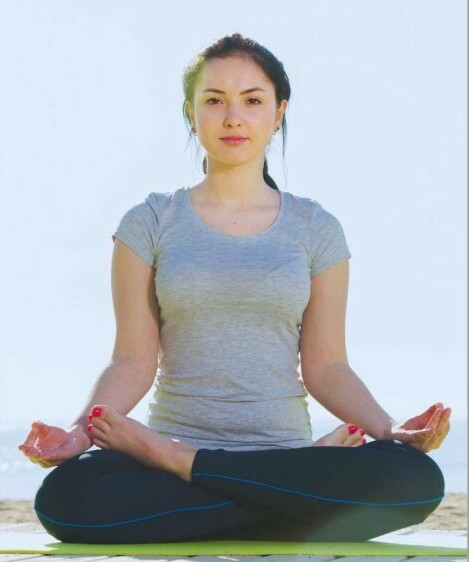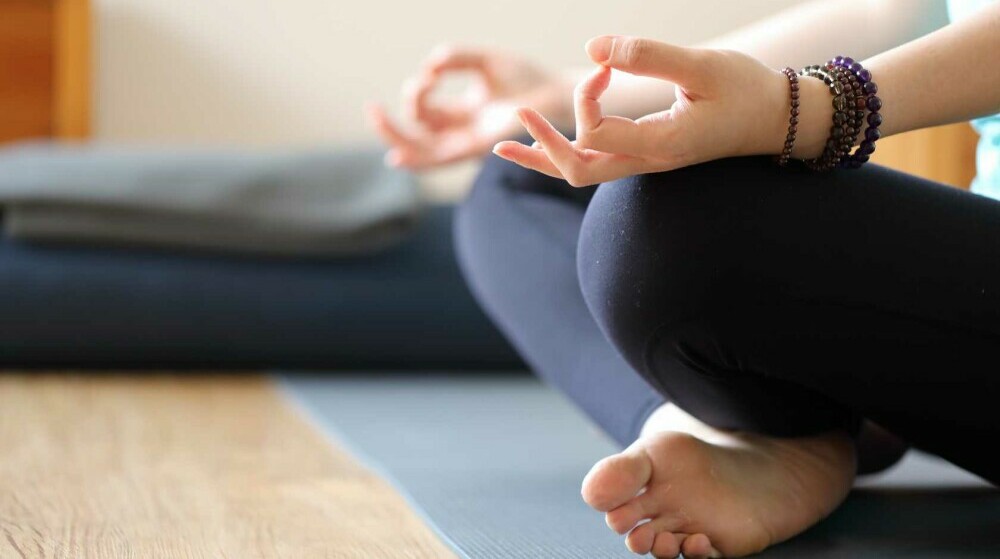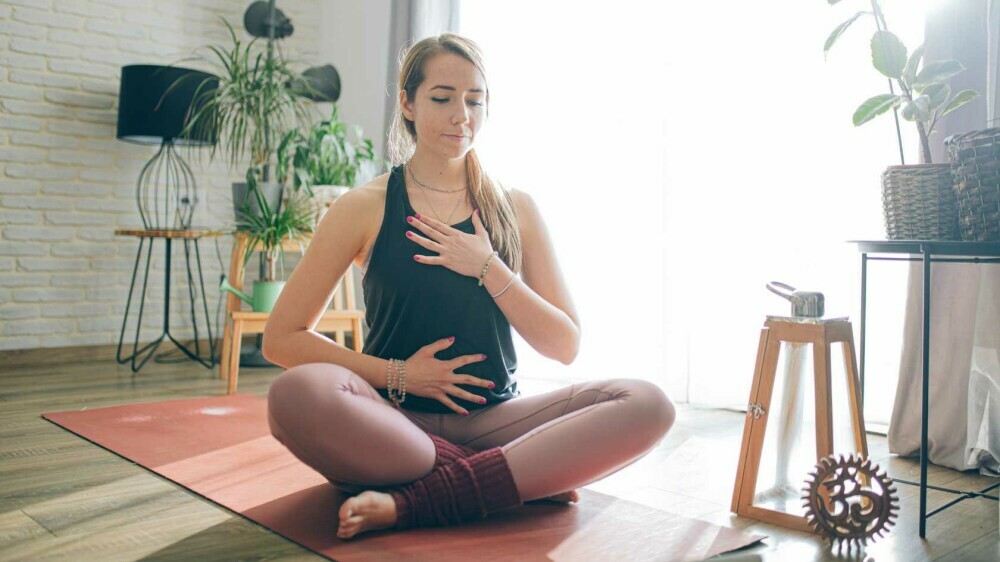Starting to meditate is great, but let’s face it – finding how to sit during meditation in the right way can be a bit tricky. Should you go for a chair or attempt that fancy lotus pose? And what’s the secret to the perfect meditation posture? So many questions! Don’t worry, though. This post is here to make it all super simple. We’re going to talk about the comfy art of sitting during meditation, so you can enjoy your practice without feeling like you’re stuck in a yoga pretzel.
Finding the Right Spot & Cushion
Let’s kick things off by finding your perfect meditation spot. Look for a quiet, comfy space with good lighting – it can be anywhere in your home where you feel relaxed. Once you’ve got your spot, it’s time to pick the right cushion or chair.
When it comes to cushions or chairs, it’s all about having your back’s best friend. Look for one that supports the natural curve of your spine. It shouldn’t be too soft that you sink or too hard that you feel like you’re on a rock.
Explore different ones that support your back and help you stay comfy. Think about how high or firm you want it to be, so it suits your body.
Grounding the Practice – Let’s Sit For Meditation
Now that you’ve got your perfect spot and cushion, let’s dive into the heart of meditation – the cross-legged position. It’s like the meditation VIP seat, and one of the classics is the “Sukhasana,” also known as the easy pose.
Sukhasana (Easy Pose)

Picture yourself sitting comfortably, cross-legged on your cushion. Keep your knees relaxed, letting them drop towards the floor. If you’re a pro at sitting cross-legged, fantastic! If not, don’t worry; it gets easier with practice. You can also sit on a chair if the floor isn’t your thing.
Maintaining a Straight Spine
Here’s the golden rule – imagine a string pulling you up from the crown of your head. This helps you sit tall with a straight spine. It’s not about being rigid; it’s about feeling grounded and connected.
Relaxed Shoulders
Drop your shoulders. Seriously, let them go. Tension in the shoulders is like the annoying friend at the meditation party. Roll them back and down, finding that sweet spot where they’re relaxed. Your neck and shoulders will thank you.
Quick Tips
- If your knees protest, try sitting on a cushion or folded blanket.
- Experiment with placing your hands on your knees or in your lap – whatever feels right.
- Close your eyes gently or keep a soft gaze. It’s your meditation, your rules.
Chair Meditation: Embracing Comfort for Your Practice
Not everyone’s a floor-sitter, and that’s perfectly fine! If you prefer the stability of a chair, you’re in for a treat. Here’s how to make chair meditation your new best friend.

Finding the Right Chair
Not any old chair will do. Pick one that’s firm and allows your feet to touch the ground. It could be your favorite comfy chair or an office chair – just make sure it’s your meditation throne.
Feet Flat on the Ground
This is the magic move. Plant those feet flat on the ground. It’s not just about comfort; it’s about stability. Having your feet firmly grounded connects you to the earth’s energy, providing a solid base for your meditation. It’s like rooting yourself for a calm and centered experience.
Sitting Comfortably
Once you’re settled in your chair, sit back comfortably. Keep your back straight, not stiff, but aligned. Rest your hands on your lap or knees, whatever feels natural. If you’re feeling extra Zen, you can try the classic mudra – thumb and forefinger touching lightly. This helps maintain good posture without feeling like you’re stuck in a yoga pose.
The Importance of Comfort
Chair meditation is all about making your practice work for you. It’s not about conforming to a specific pose but finding what feels right. Your meditation journey is personal, and your chair is your supportive ally.
Aligning the Body and Mind with Right Posture
Your spine is like the highway for good vibes. Straightening it isn’t just about looking good; it’s the secret sauce for a smooth flow of energy. Here’s how to align your head, neck, and spine for a meditation journey that’s as uplifting as it gets.
Head, Neck, and Spine Alignment
Keep it simple. Your head should be straight like it’s balancing on your neck without strain. Your neck follows the natural curve of your spine. When your head and neck are in sync, it’s like a harmony concert for your mind and body. Remember, your spine creates a pathway for energy to flow seamlessly, so straighten that spine.
Shoulder Position for Focus
Ever tried to focus with tense shoulders? Not the best combo. Relaxing your shoulders is like opening the curtains for clarity. Lift them gently towards your ears, then let them drop. This simple move releases built-up stress, making way for a serene mind.
The Magic of Hand Mudras – Unlocking Concentration
Ever wondered how hand positions could elevate your meditation game? Enter the world of Hand Mudras – the secret handshake between your hands and concentration.

Classic Meditation Mudras
Mudras are like the sign language of meditation. The classic ones, like the Gyan Mudra (thumb and forefinger touching), aren’t just for show. They channel energy and focus, creating a connection between mind and body.
Contribution to Concentration
Your hands aren’t just there for decoration. When you place them in specific mudras, you’re creating a circuit of concentration. It’s like flipping the switch to amplify your focus. The energy flows where your attention goes, and mudras are the pointers guiding the way.
Mudras for Energy Flow
Feel like you need an energy boost? Try the Prana Mudra. It’s like plugging into a power source, enhancing the flow of vitality within you. Each mudra has its vibe – find the one that resonates with your energy needs.
Incorporating Mudras for Intentions
Mudras aren’t one-size-fits-all; they’re versatile tools for different intentions. Need grounding? Try the Earth Mudra. Seeking clarity? The Akash Mudra might be your go-to. It’s like having a menu of hand gestures for your specific needs.
Connecting Hands with Breath
Now, here’s the secret handshake part. Sync your mudra with your breath. As you inhale, feel the energy gathering; as you exhale, visualize it flowing. Your hands become the dance partners of your breath, moving in harmony with each inhale and exhale.
Quick Tips
- Start with one or two mudras to keep it simple.
- Experiment with different mudras to see which ones resonate with you.
- Connect with the intention behind the mudra – it’s like giving your meditation a purpose.
The Connection Between Posture & Breath
Did you know that your posture is like a director that guides your breath and body? As soon as you sit up straight with your shoulders relaxed, you will notice your breath takes center stage. A proper posture opens up the chest, allowing you to breathe deeply and feel each inhale and exhale. It’s like a gentle reminder from your body: “Hey, don’t forget to breathe!”
Synchronizing Breath with Movements
As you inhale, feel your chest rise, your belly expanding; as you exhale, notice the gentle fall. It’s a synchronized dance. Try gentle sways or subtle stretches with your breath – it’s the body’s way of joining the breath in a coordinated performance.

Focusing on the Present Moment Through Posture
Your posture is your passport to the present. Feel the ground beneath you, the air around you. It’s a sensory experience that anchors you in the now. Every conscious adjustment in your posture is a return ticket to the present moment, away from the chaos of the past and future.
Utilizing Posture as an Anchor for Concentration
Imagine your posture as a lighthouse, guiding your focus through the meditation seas. When your mind drifts, come back to the upright position, feel the contact with the ground, and breathe. Your posture becomes your anchor, keeping you steady during mental waves.
Addressing Discomfort or Pain
Comfort is the co-pilot of meditation. If discomfort or pain sneaks in, don’t ignore it. Gently adjust your posture, maybe shift your weight or change the angle of your legs. Listen to your body – it’s the wisest guide on this journey.
Quick Tips
- Start with a comfortable posture and make subtle adjustments as needed.
- Experiment with different seated positions to find what feels best for you.
- Be patient; the relationship between breath and posture is a lifelong dance.
Final Words: Mastering the Art of Sitting
As we come to the end of this post, remember to listen to your body. Finding the right sitting position is your journey. Feel free to experiment with different postures, cushions, and chairs. Make subtle adjustments until you find what resonates with you.
The art of sitting is a gift you give to yourself – By mastering the art of sitting, you’re crafting the foundation for a more profound and enriching meditation practice.
So, embark on your meditation practice, sit with intention, breathe with awareness, and let your posture be the anchor that grounds you in the beauty of the present. Happy Meditating!!!

